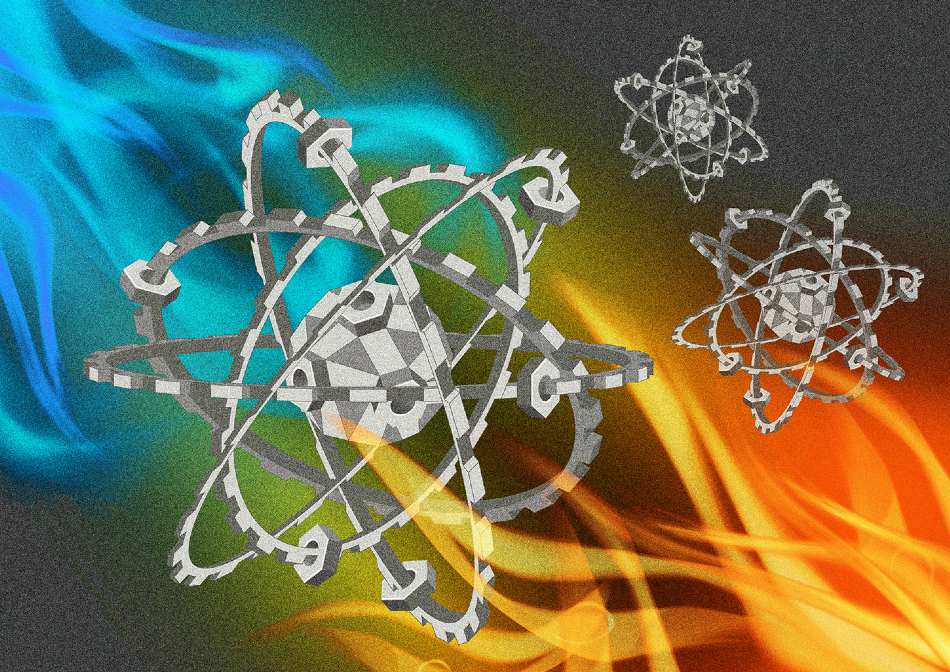May 5 2020
For the first time in the history of miniaturization of machines, researchers at CQT and their colleagues have demonstrated that a single atom can work as an engine or a fridge. Such devices could be developed into fuel cells and future computers to manipulate energy flows.
 Experiments with a single-atom device help researchers understand what quantum effects come into play when machinery shrinks to the atomic scale. Image credit: Aki Honda for CQT.
Experiments with a single-atom device help researchers understand what quantum effects come into play when machinery shrinks to the atomic scale. Image credit: Aki Honda for CQT.
Think about how your computer or laptop has a lot of things inside it that heat up. Today you cool that with a fan that blows air. In nanomachines or quantum computers, small devices that do cooling could be something useful.
Dario Poletti, Singapore University of Technology and Design
This study offers a new understanding of the mechanics of such devices. The research is a collaboration with scientists from CQT and the Department of Physics at the National University of Singapore (NUS), the Singapore University of Technology and Design (SUTD), and the University of Augsburg in Germany. The study findings were reported in the peer-reviewed journal npj Quantum Information on May 1st, 2020.
Atom-Sized Machines
Both engines and refrigerators are machines based on the principles of thermodynamics—a branch of science illustrating how energy travels inside a system and how useful work can be extracted. A classical engine converts energy into useful work. A refrigerator performs work to convert heat, reducing the local temperature. In a way, they are opposites.
Small heat engines have previously been made using a single molecule, a single atom, and defects in diamond. The main difference in this device is that it exhibits quantum-like properties in its action.
We want to understand how we can build thermodynamic devices with just a few atoms. The physics is not well understood so our work is important to know what is possible.
Manas Mukherjee, Principal Investigator, CQT
Mukherjee led the experimental work for this study.
The thermodynamics of a single barium atom was investigated by the researchers. In their approach, lasers were made to move the electrons of one of the atoms between two energy states as part of a cycle, wherein a portion of the energy was pushed into the vibrations of the atom.
Similar to a car engine that ingests petrol to both move pistons and charge its battery, energy from the lasers is used by the atom as fuel to increase its vibrating motion. The vibrations of the atom act like a battery, where energy is stored for later use. When the cycle is rearranged, the atom acts like a fridge, where energy is removed from the vibrations.
In both operation modes, quantum effects occur in correlations between the electronic states and vibrations of the atom.
At this scale, the energy transfer between the engine and the load is a bit fuzzy. It is no longer possible to simply do work on the load, you are bound to transfer some heat.
Dario Poletti, Singapore University of Technology and Design
He formulated the theory along with colleagues Jiangbin Gong at NUS Physics and Peter Hänggi in Augsburg. Due to the fuzziness, the process turns less efficient; however, the researchers could still make it work.
Zapped into Action
Manas and his collaborators Noah Van Horne, Dahyun Yum, and Tarun Dutta made use of a barium atom from which an electron (a negative charge) was removed. This renders the atom positively charged, thus enabling it to be held still within a metal chamber more easily by electrical fields. All other air around it is removed. Then, the atom is zapped with lasers to make it move through a four-stage cycle.
The vibration of the atom was measured after applying 2 to 15 cycles. A specified number of cycles was repeated up to 150 times to measure the amount of vibrational energy that was present at the end, on average. The vibrational energy was observed to increase when the atom was zapped with an engine cycle and decrease when the zaps followed the fridge cycle.
Both complex calculations and observations were required to gain insights into the atom-sized machine. The researchers had to monitor two thermodynamic quantities called ergotropy (the energy that can be converted to useful work) and entropy (relates to disorder in the system).
When the atom-machine runs, there is an increase in both entropy and ergotropy. According to Noah, the first author of the study and a PhD student, it can still be approached in a simple way: “Loosely speaking, we’ve designed a little machine that creates entropy as it is filled up with free energy, much like kids when they are given too much sugar.”
Journal Reference:
Van Horne, N., et al. (2020) Single-atom energy-conversion device with a quantum load. npj Quantum Information. doi.org/10.1038/s41534-020-0264-6.